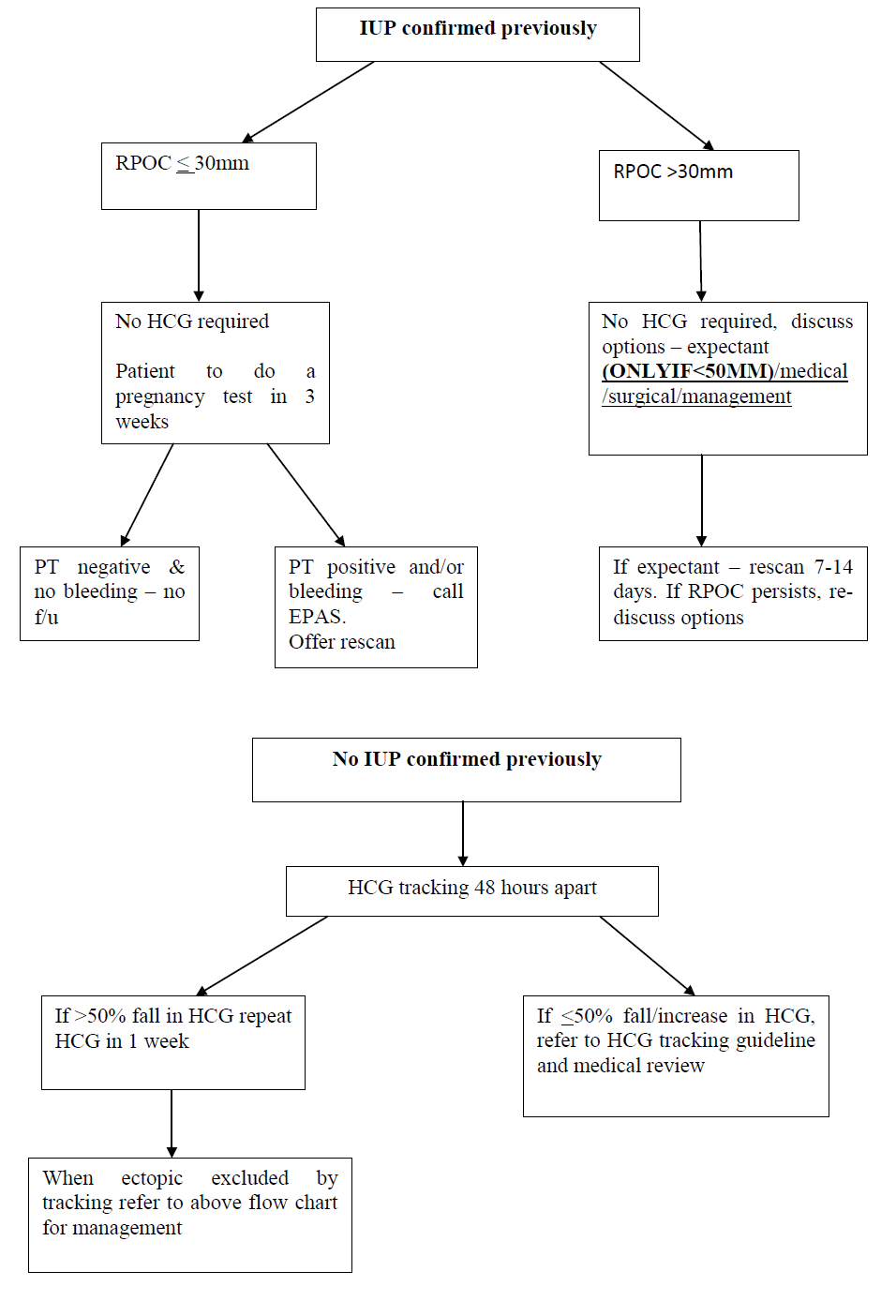The characteristic clinical manifestations of RPOC may include heavy or prolonged uterine bleeding and pelvic pain. Signs of infected RPOC can commonly include pyrexia, offensive discharge or uterine tenderness.
Retained Products of Conception (RPOC) (677)

Please report any inaccuracies or issues with this guideline using our online form
The term retained products of conception (RPOC) refers to placental and/or fetal tissue that remains in the uterus after a spontaneous pregnancy loss (miscarriage), planned pregnancy termination or preterm/term delivery. The presence of RPOC after a spontaneous pregnancy loss distinguishes a complete from an incomplete miscarriage.
Any patient haemodynamically unstable or clinically unwell requires urgent medical review.
Perform speculum examination to assess bleeding and look for RPOC where there is moderate or heavy bleeding.
NICE Guidelines recommend that if bleeding is not heavy and women are clinically stable, all women wait 7 days and rescan undertaken before undergoing active treatment, if previous scan has identified an intrauterine pregnancy.

Patient to call EPAS if:
- Bleeding fails to settle after 3 complete weeks from being diagnosed, even if pregnancy test negative. (Requires rescan)
- If pregnancy test remains positive after 3 weeks. (Requires rescan + HCG)
- If signs of infection present e.g. raised temperature, foul smelling discharge, generally feeling unwell. (Requires rescan and infection screening)
Antibiotics should not routinely be prescribed unless there are signs of infection (offensive vaginal discharge / pyrexia / raised WCC/CRP).
It is also important to use the flow-chart as a guide Other factors such as amount of bleeding, time-frame, etc. must also be taken into account with individualised care plans be made for some patients.
